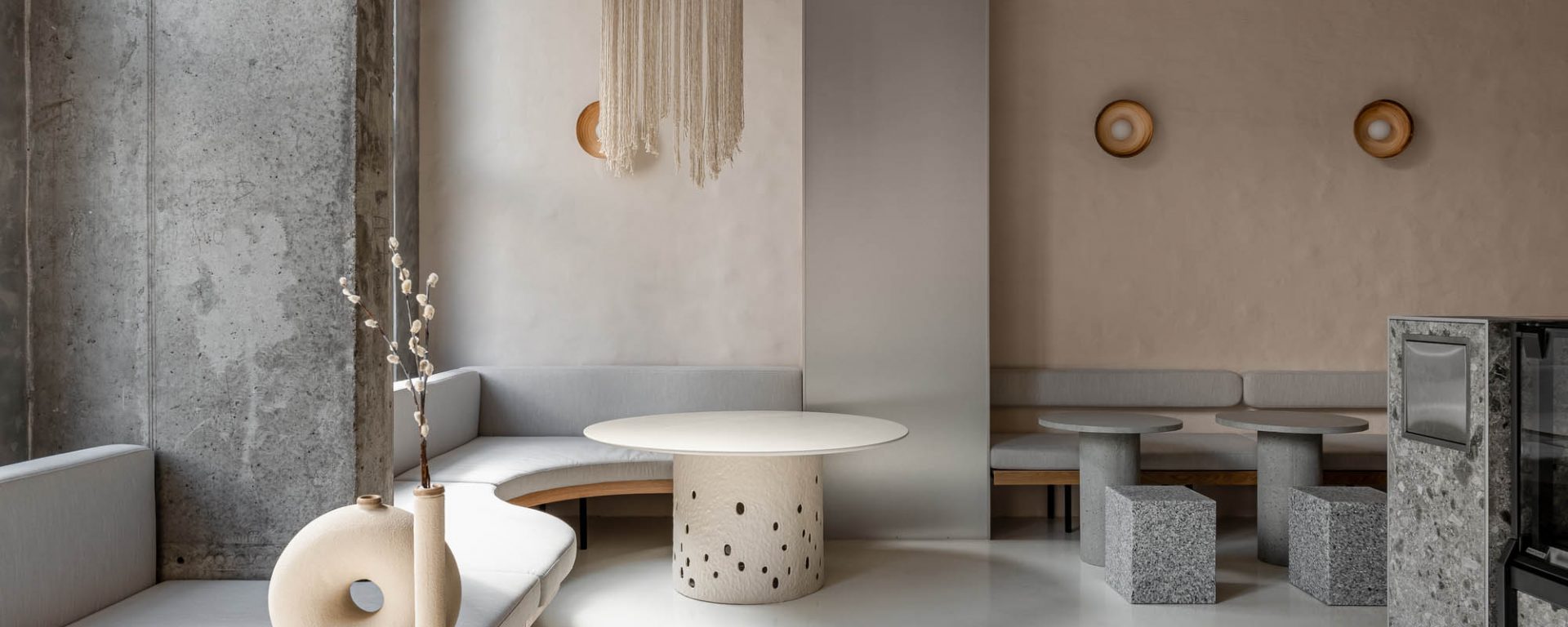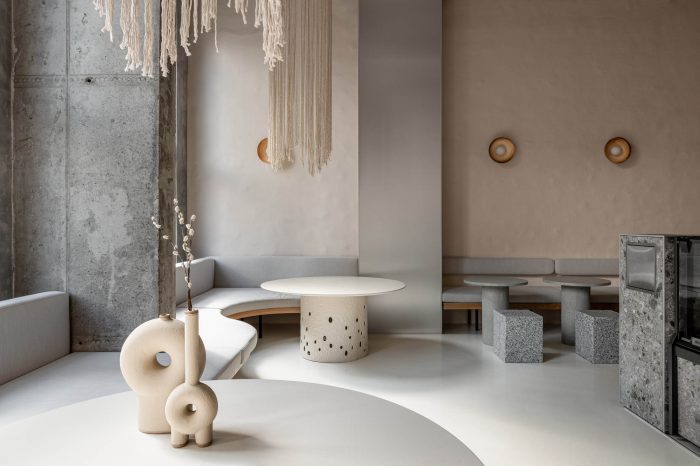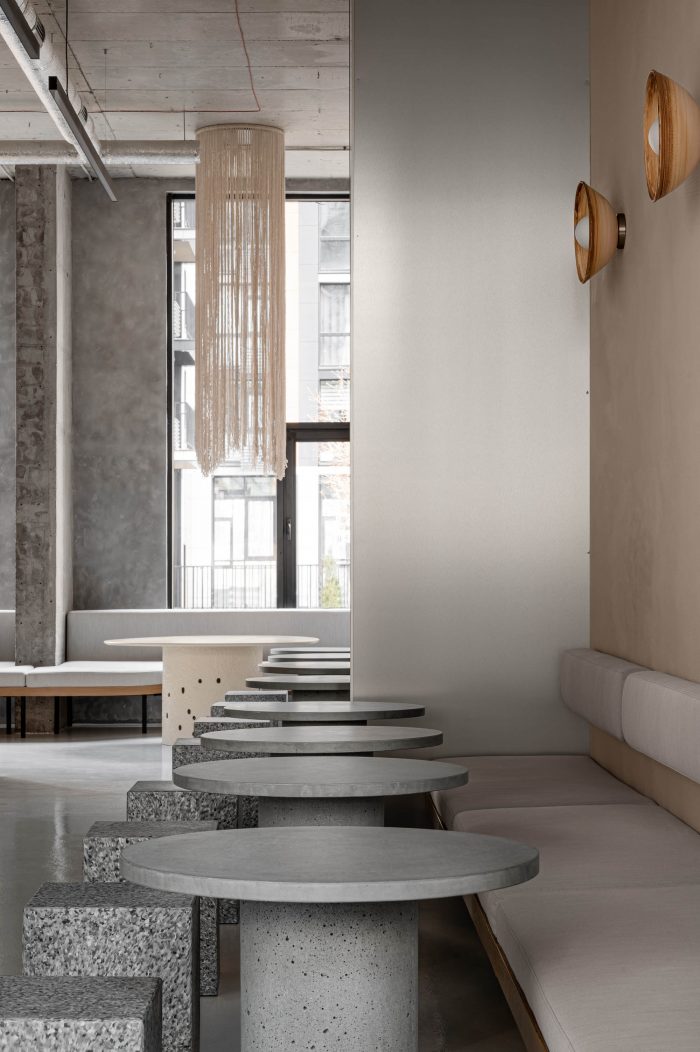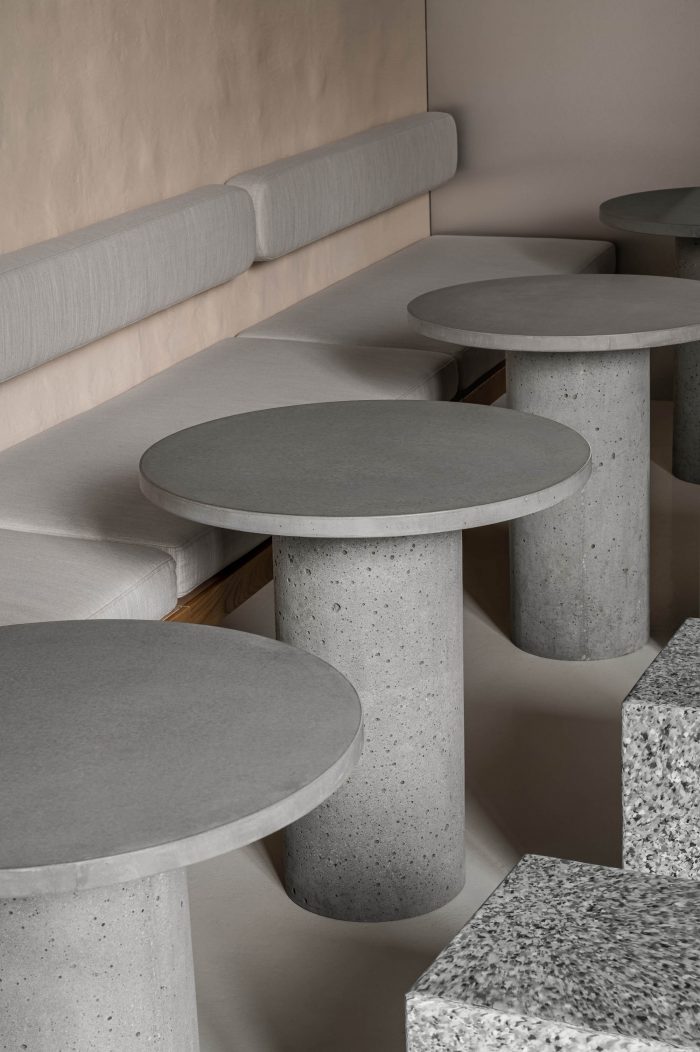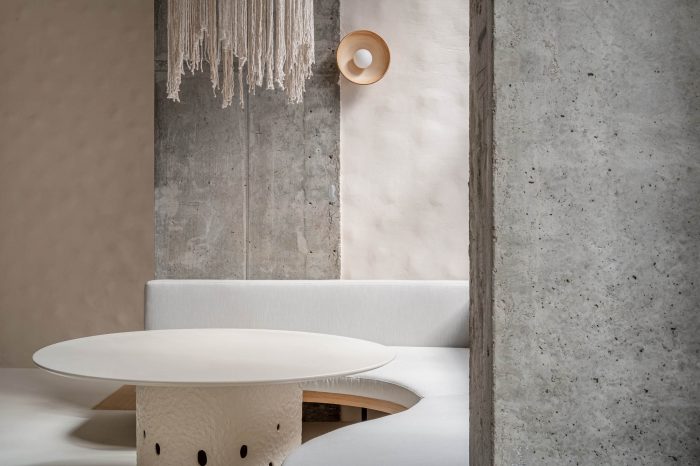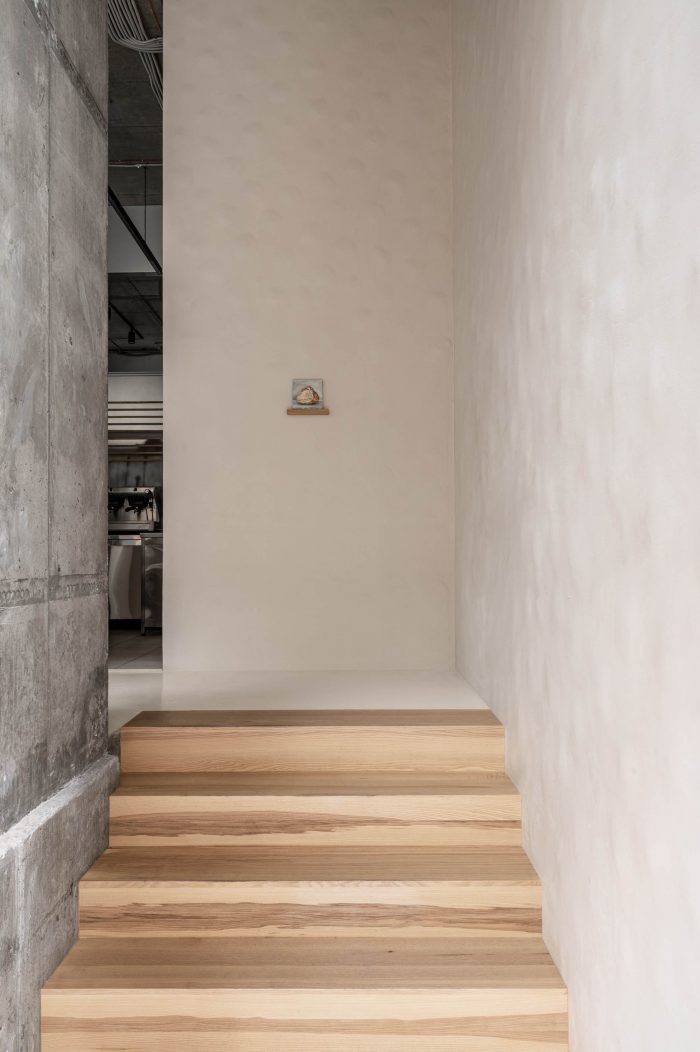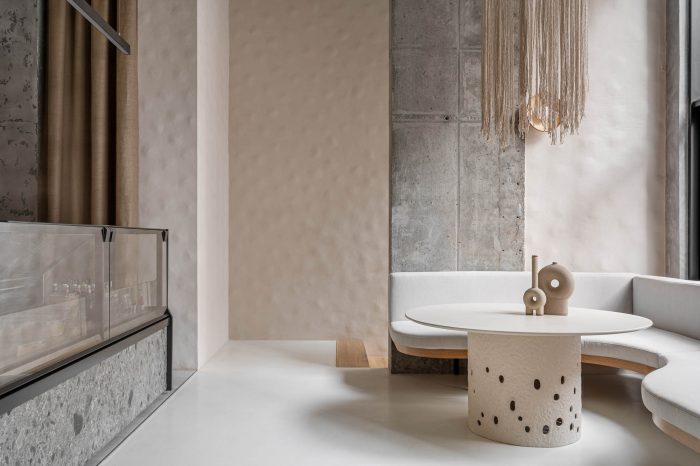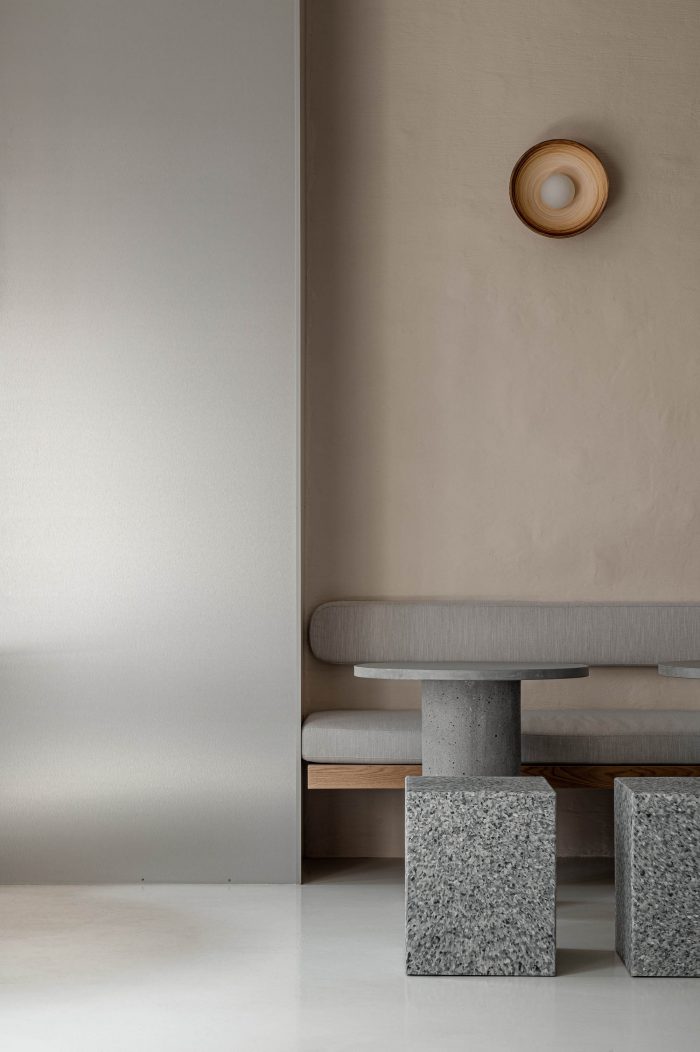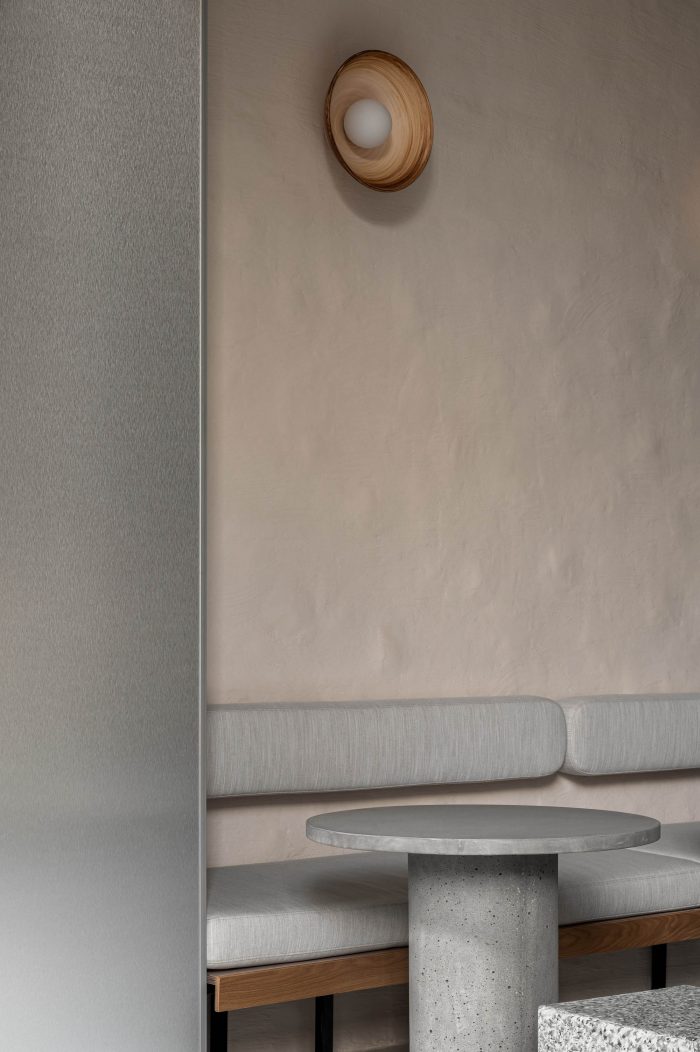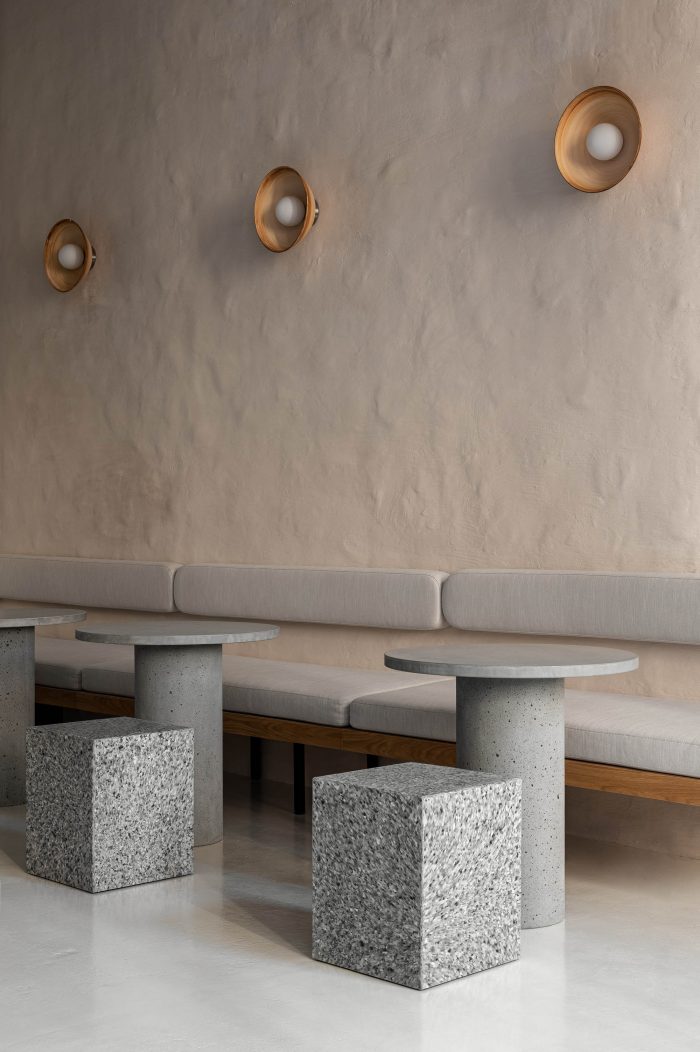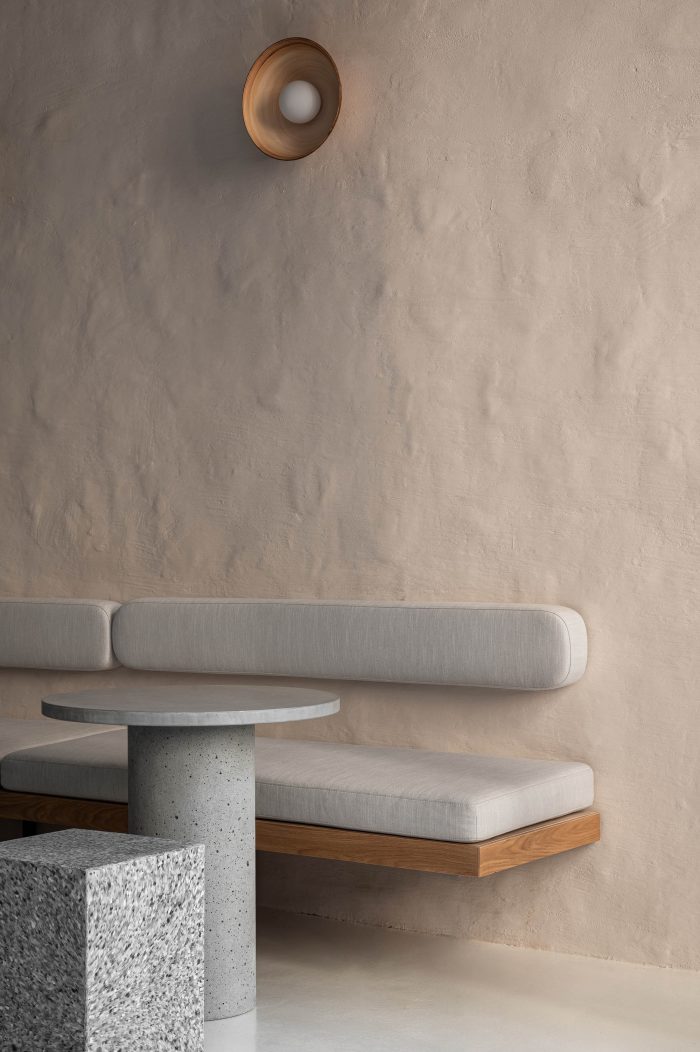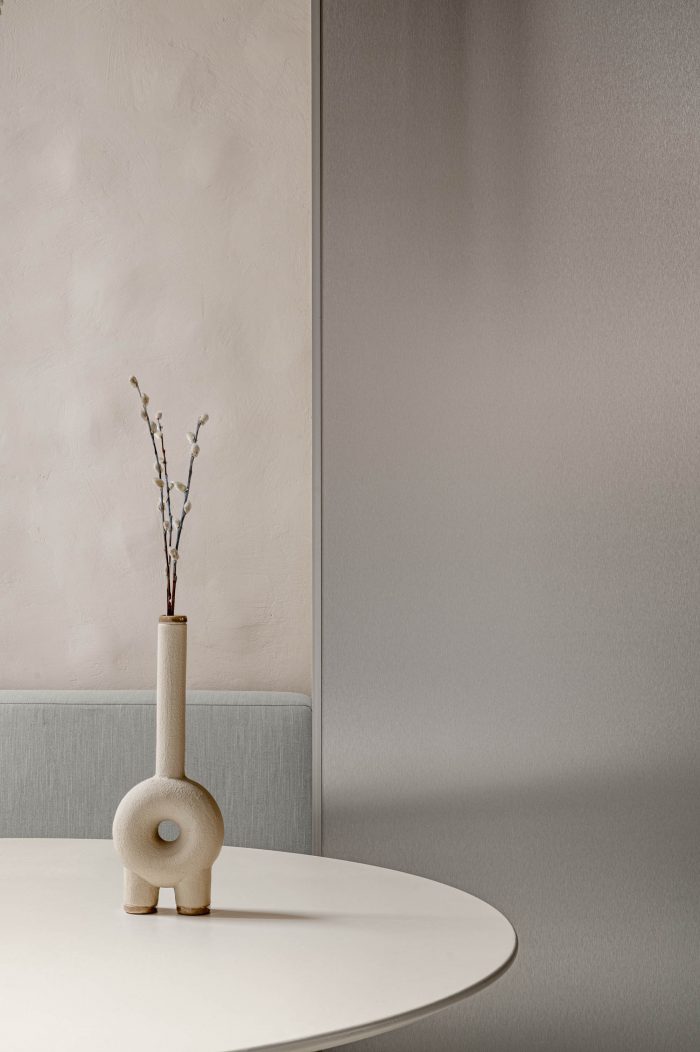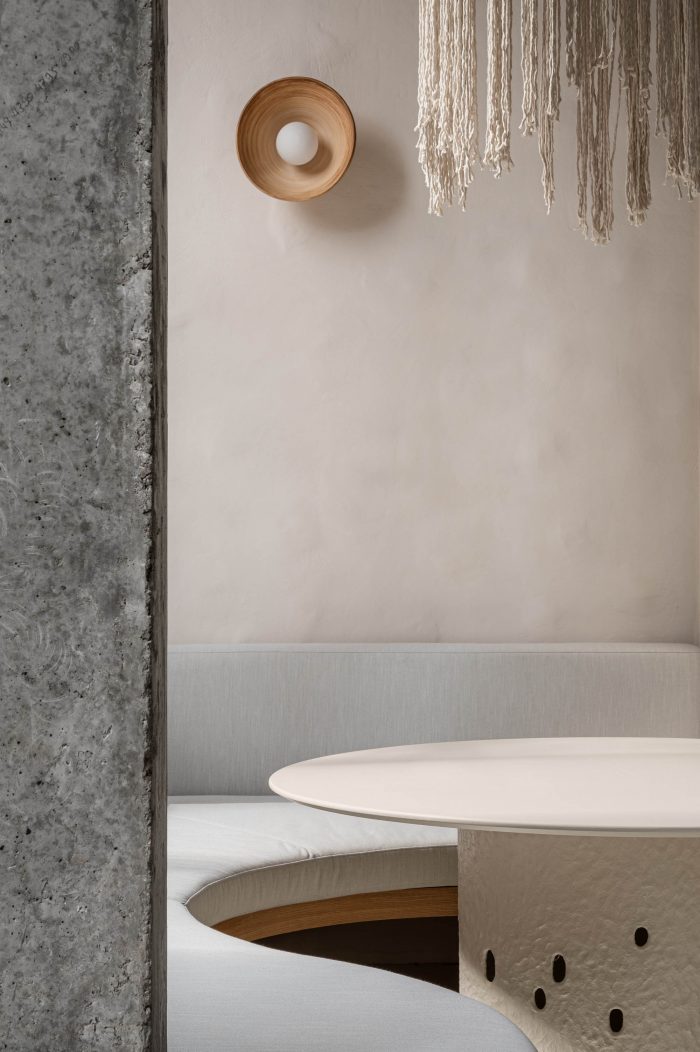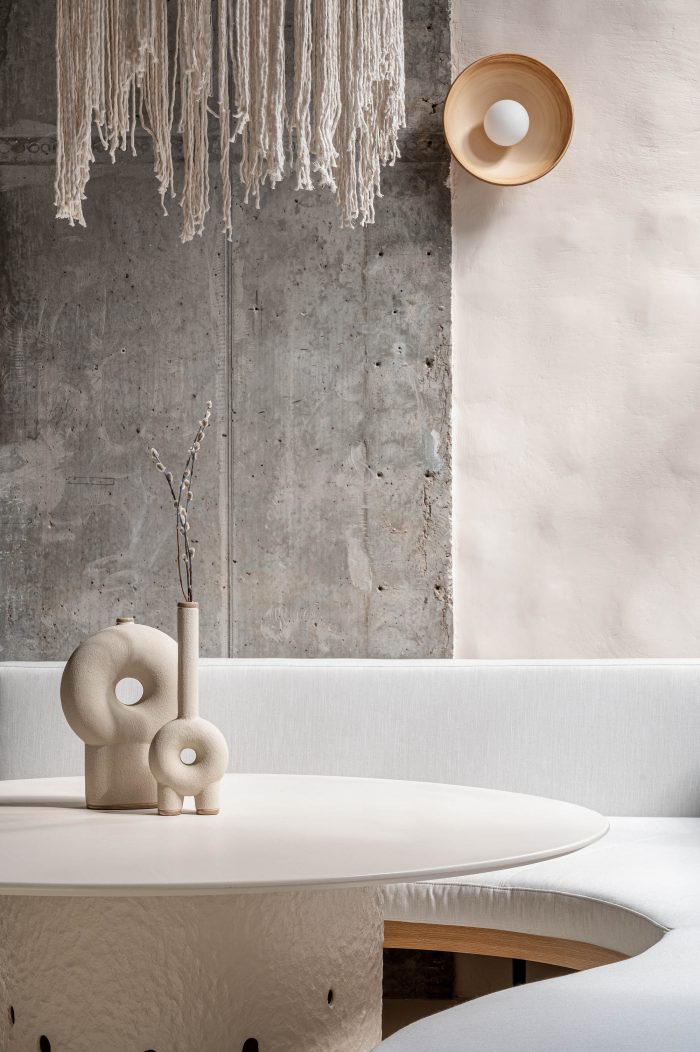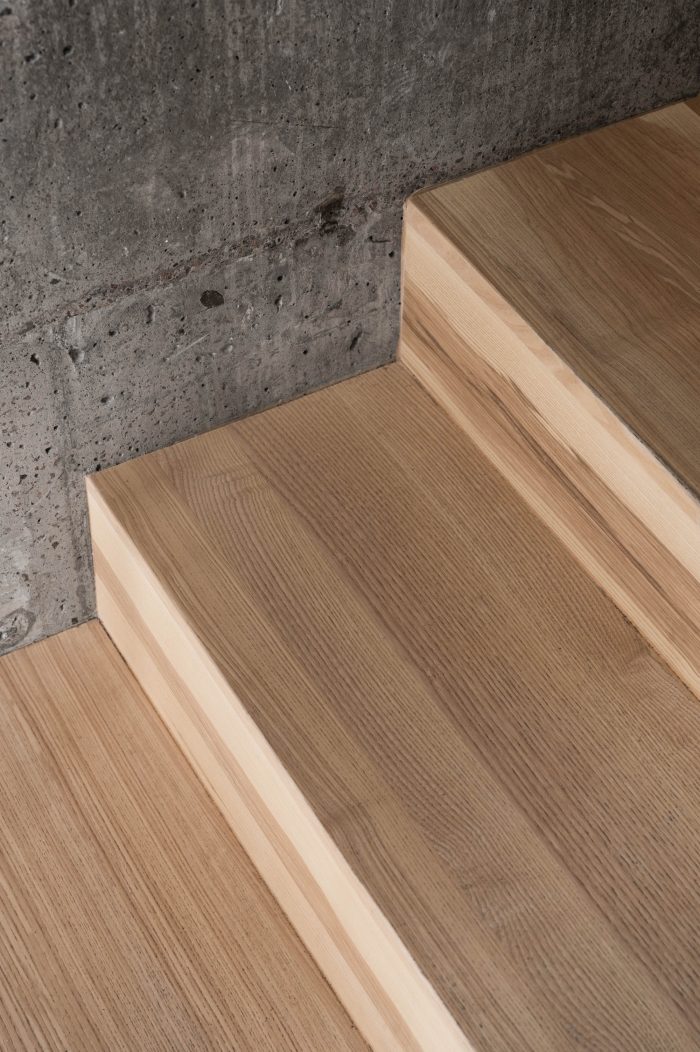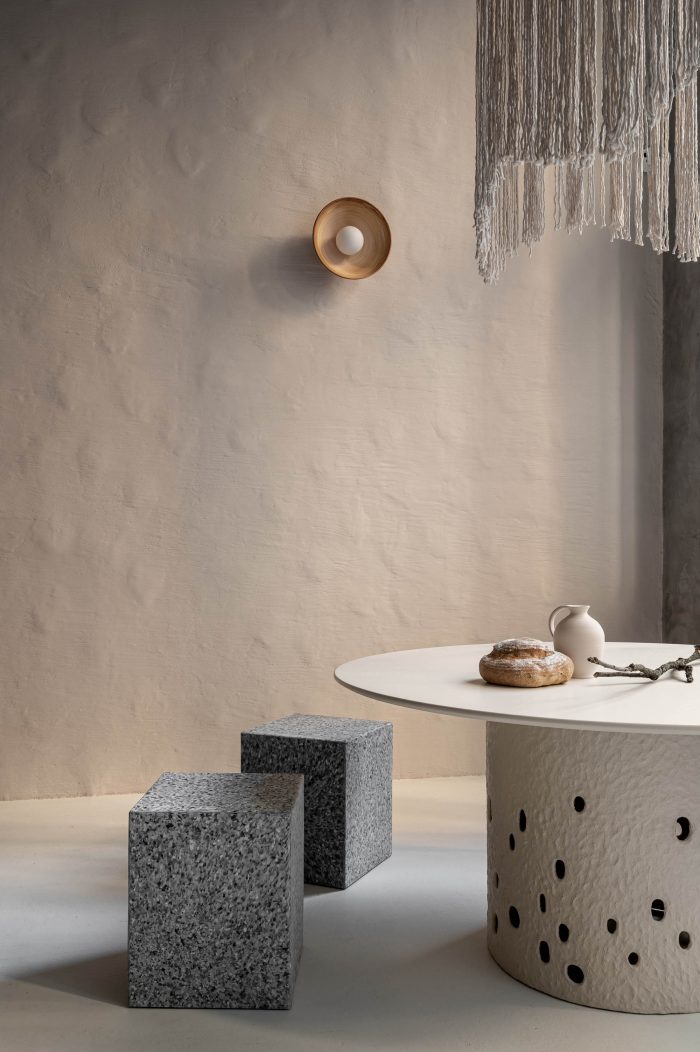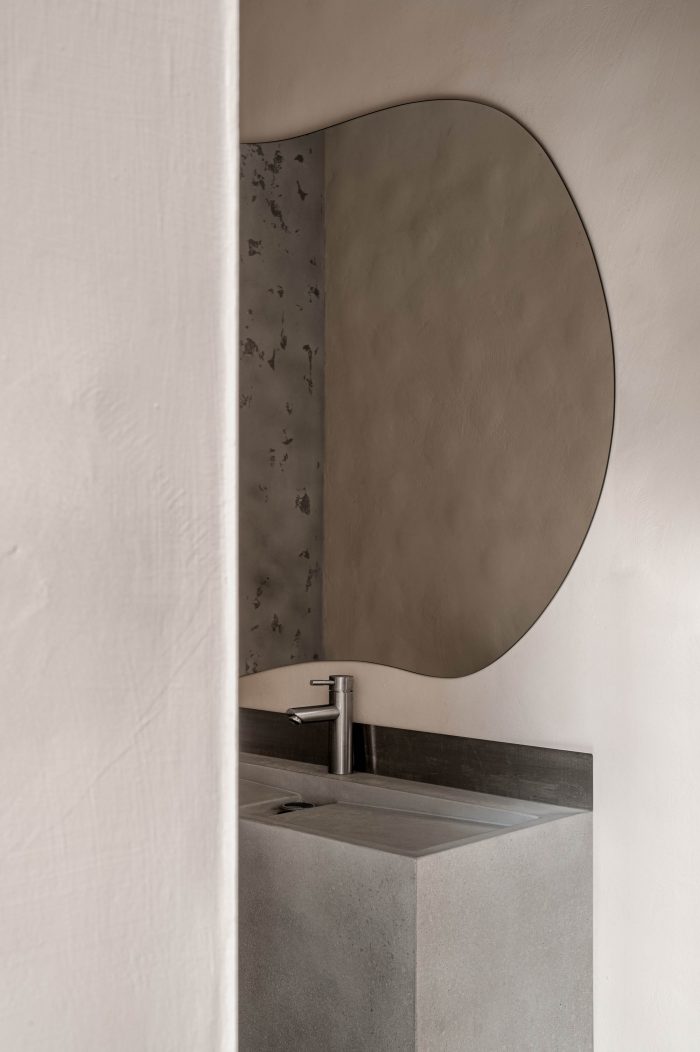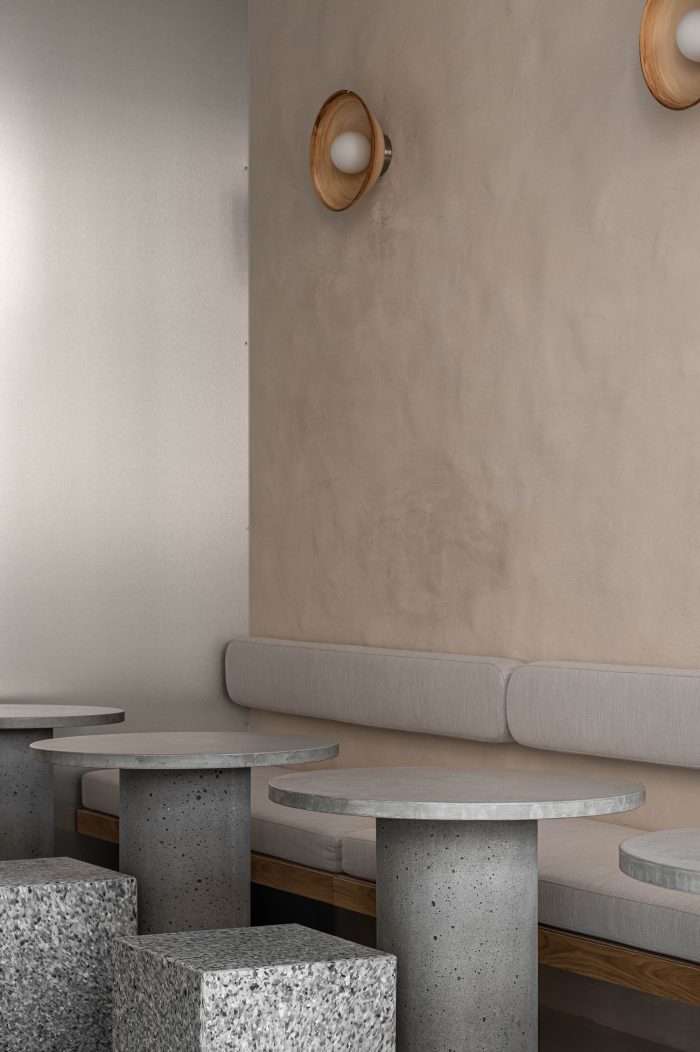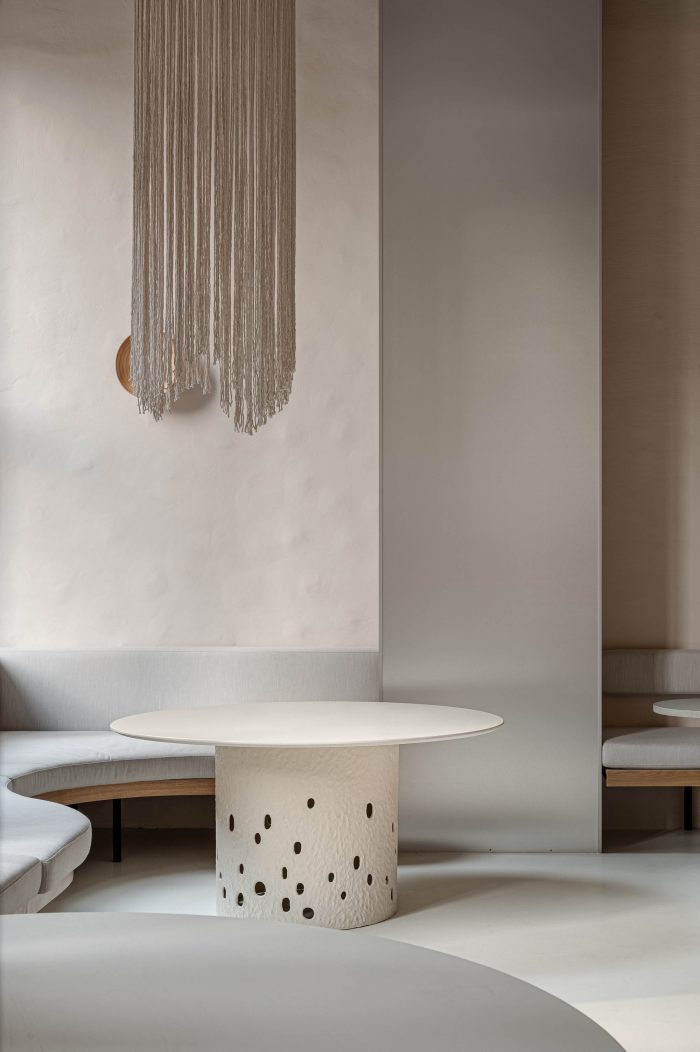Istetyka “这个名字是两个乌克兰词的组合 – 吃和美学。即食食品的美学是这家餐厅的主要信息,在空间的内部和提供的菜肴中都有体现。店主试图改变人们对快速即食食品的态度–把普通变成一种仪式,把食物变成一种体验。
The name “Istetyka” is a combination of two Ukrainian words — to eat and aesthetics. The aesthetics of ready-to-eat food is the main message of the eatery traced in the interior of the space and the dishes served. The owners sought to change the attitude to fast ready-to-eat food — turn ordinary into a ritual, food into an experience.
客人们被体现在木材、粘土墙和未加工的混凝土中的简洁的入口所欢迎,这些都是餐厅所在建筑的原貌。一幅描绘面包的画作是对食物作为一种艺术的审美方式的代表。该作品说:少意味着多。价值和有价值的东西都隐藏在日常生活中。一幅小画在大尺度上象征着本质。
Guests are welcomed by the laconic entrance embodied in wood, clay walls and unprocessed concrete, original to the building where the eatery is. A painting depicting bread is a representation of the aesthetic approach to food as an art. The work says: less means more. Value and valuable things are hidden in daily routine. A small picture on a large scale symbolizes the essence.
在功能上,食堂被分为三个区域。主要区域有Faina设计的宽敞的圆桌,用于友好的会议。桌子的腿是由基于粘土、再生纸和其他自然成分的可持续材料 “ztista “制成的。一个工匠在回收的钢基础上应用了生活的混合物,因此,从手中拿出了一个独特的、充满生活气息的不规则轮廓。这种古老的技术被称为 “valkyvannia”,是我们的祖先用来建造住宅的墙壁。
Functionally the eatery is divided into three zones. The main area with spacious round tables by Faina serves for friendly meetings. Legs of the tables are made from sustainable material “ztista” based on clay, recycled paper, and other natural components. An artisan applies the living blend on the recycled steel basis and thus, from the hands, a unique, full of living irregularities silhouette comes out. This ancient technique known as ‘valkyvannia’ was used by our ancestors for building walls of a dwelling.
在主要区域附近,有单独的混凝土桌子,供一个或两个人使用。 它们由回收的塑料制成的简单的长方形蒲团来补充。厨房与座位区被调和的玻璃隔开,优雅的框架上有一个简约的订单架。
Near the main area, there are separate concrete tables for one or two. They are complemented by simple rectangular poufs made of recycled plastic. The kitchen is separated from the seating area by the toned glass, elegantly framed with a minimalist rack for orders.
与地球的联系和生态方法是Yakusha设计理念的基础。对材料和它们的来源给予了特别关注。此外,建筑师们坚持自然平衡。座椅的简单几何形状被桌子和灯具的圆润线条轻轻地柔化。混凝土墙和家具的冰冷与活泥土的温暖相遇。粗糙和不均匀的质地被钢铁的纯净和光滑所平衡。
Connection with the earth and ecological approach is the basis of Yakusha Design philosophy. Special attention was paid to the materials and their origin. In addition, architects adhered to the natural balance. The simple geometric shapes of the seats are gently softened by the rounded lines of the tables and lamps. The coldness of concrete walls and furniture meets the warmth of living clay. Roughness and uneven textures are balanced by the purity and smoothness of steel.
Istetyka餐厅的大多数物品都是由当地工匠手工制作的。具有纹理表面的正宗粘土花瓶取自Faina的家具和装饰品系列,是Yakusha设计工作室的一部分。手工制作的藤条灯优雅地完成了餐桌上方的区域。伴随着圆润的钢制壁灯,它们在日落之后使室内充满了舒缓的光线。
Most items of the Istetyka eatery were handmade by local artisans. Authentic clay vases with textured surfaces are taken from Faina’s collection of furniture and decor, part of Yakusha Design Studio. Artisanal macrame-lamps elegantly finish area over dining tables. Accompanied by the rounded steel sconces, they fill the interior with a soothing light after the sunset.
Architects: Yakusha Design & Architecture Studio
Area: 127 m²
Year: 2021
Photographs: Yevhenii Avramenko
City:Kyiv
Country:Ukraine

